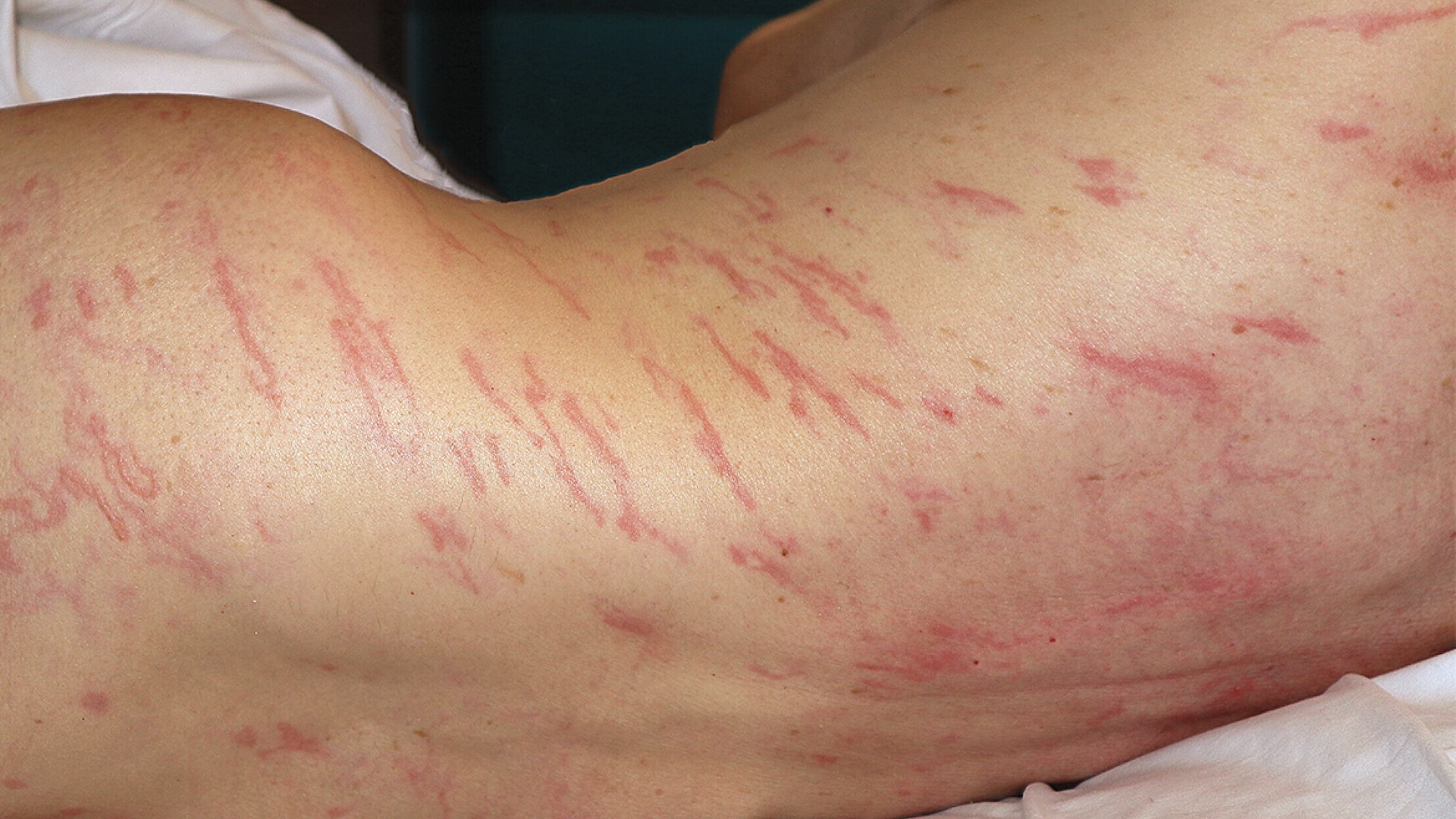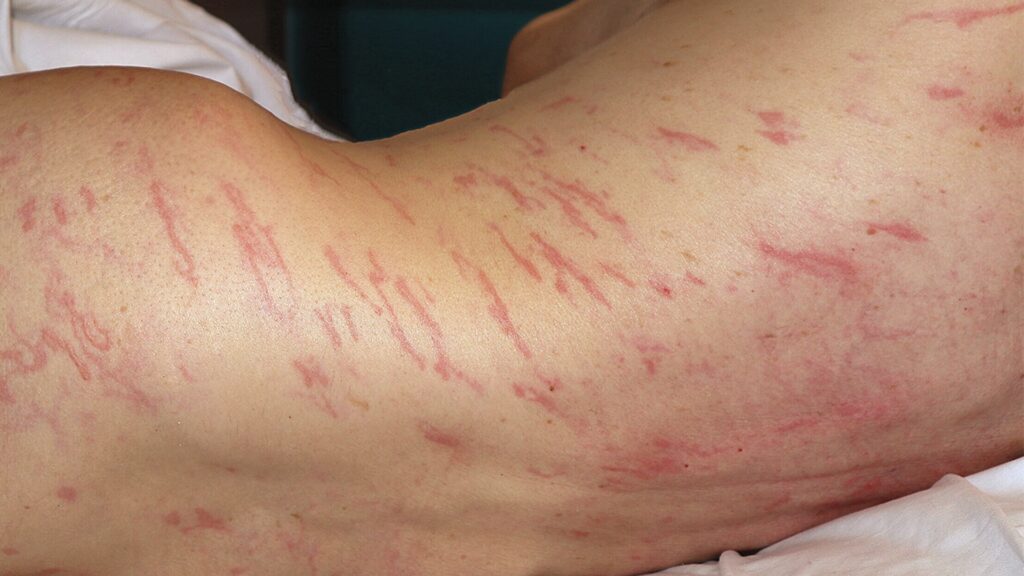
The patient: A 64-year-old man in Spain
The symptoms: The patient, who had previously been diagnosed with lung cancer, had been hospitalized because the cancer had spread and was pressing on his spinal cord. During treatment, he was given a high dose of glucocorticoids, which reduce inflammation and are sometimes used as part of cancer treatment or to counter chemotherapy side effects. But after four days, the man developed an itchy rash and mild diarrhea.
What happened next: Doctors examined the rash, which looked like red, wavy lines all over the patient’s body. The clinicians found that the rash had originated near the anus and then “spread rapidly to the trunk and limbs,” they wrote in a report of the case. During this initial examination, the doctors outlined the rashes with a pen, but a day later, the rashes had “migrated away from their original locations.” In other words, they no longer appeared inside the pen-drawn outlines.
At this point, the medical providers also took a sample of the man’s stool to analyze.
The diagnosis: In the stool sample, the doctors found larvae of a roundworm species called Strongyloides stercoralis, a parasite that can cause an infection called strongyloidiasis in humans. Based on this, the man was diagnosed with “strongyloides hyperinfection syndrome with larva currens.” The latter half of the diagnosis — “larva currens” — refers to a shifting rash caused by worm larvae moving under the skin.
The treatment: The man was treated with oral ivermectin, a common antiparasitic drug, and his rash and diarrhea went away.
What makes the case unique: S. stercoralis can be found in tropical and subtropical areas around the world. People are most often infected in the summer and in places with poor sanitation and in rural or remote communities. Most people exposed to the parasite don’t have any symptoms, but in some, the worm can cause a potentially life-threatening condition called “hyperinfection syndrome.”
This syndrome is most likely to emerge in patients with medical conditions that cause immune deficiencies, as well as in those being treated with high-dose corticosteroids, which suppress the immune system. According to the Centers for Disease Control and Prevention (CDC), the syndrome has most often been reported in people being treated for asthma or chronic obstructive pulmonary disease (COPD), but in this case, the drugs were used as a part of the man’s cancer treatment.
The immune-system suppression caused by the steroids allows the worm’s life cycle to speed up, leading to an “overwhelming number of migrating larvae.” In this case, the larvae could be seen moving across the man’s skin in the form of a migrating rash. Larva currens is considered a rare complication of strongyloidiasis, with only a handful of cases reported in the medical literature.
“Left untreated, the mortality rates of hyperinfection syndrome … can approach 90%,” the CDC noted.
S. stercoralis worms pass through the stool of infected hosts and can be found in soil. When a person comes into contact with soil contaminated with these worms, they can penetrate the person’s skin and infect them. People can also become infected when they come into contact with human waste or sewage that contains the parasite. Exactly how the man became infected is unknown, but he “worked in sewage management,” the case report noted.
This article is for informational purposes only and is not meant to offer medical advice.
Premium IPTV Experience with line4k
Experience the ultimate entertainment with our premium IPTV service. Watch your favorite channels, movies, and sports events in stunning 4K quality. Enjoy seamless streaming with zero buffering and access to over 10,000+ channels worldwide.

















